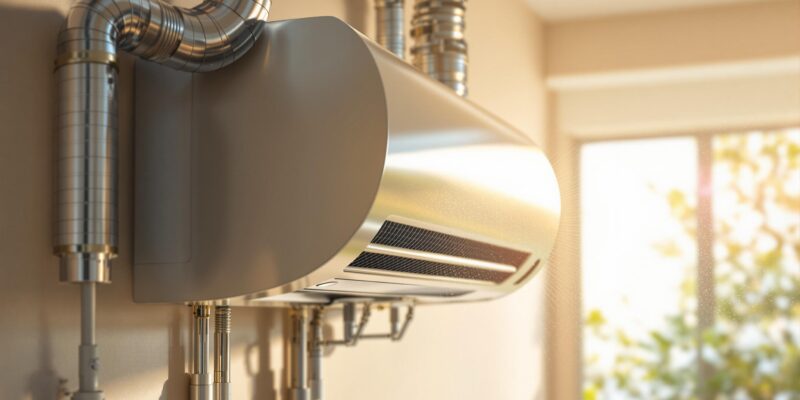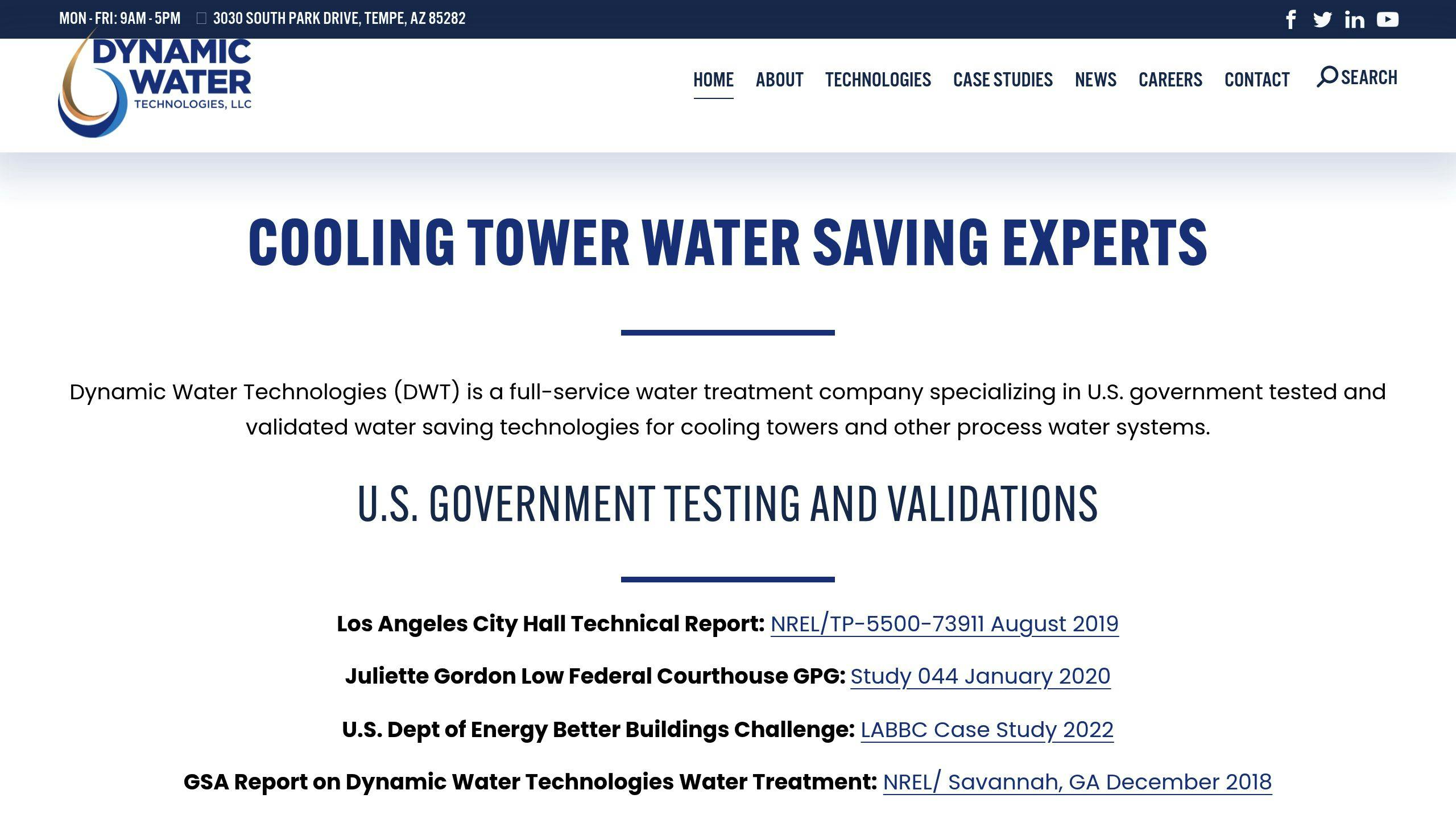What Is Particulate Matter in HVAC Systems?
Particulate matter in HVAC systems refers to tiny particles, like dust, pollen, mold spores, and bacteria, that can affect air quality and system performance. These particles can reduce airflow, increase energy costs, and even pose health risks.
Key signs of particulate issues include:
- Visible dust near vents
- Higher energy bills
- Weak airflow
- Allergy symptoms
- Strange odors
How to manage it:
- Replace filters regularly
- Clean ducts and vents
- Schedule professional maintenance
- Use high-efficiency filters (MERV ratings 9-16 for better air quality)
Indoor Air Quality (IAQ) Basics 3D
Understanding Particulate Matter
Particulate matter in HVAC systems consists of tiny airborne particles that get drawn into the system and circulate throughout indoor spaces. These particles often make their way inside through air intake vents, as well as gaps around doors and windows. Knowing how these particles enter your building highlights why maintaining your HVAC system is so important.
Keeping up with routine HVAC maintenance can significantly lower particulate matter levels, leading to better indoor air quality.
Effects on HVAC Systems
Let’s take a closer look at how particulate matter impacts HVAC systems, from where it accumulates to the problems it causes.
Where Particles Accumulate
Dust and debris tend to gather in specific HVAC components, which can reduce system efficiency over time. Key areas include:
- Air Handler Units: Dust and debris collect on fan blades and motor housings, affecting performance.
- Evaporator Coils: Particles stick to the cold, moist surfaces, leading to buildup.
- Return Air Ducts: Particulates settle along bends and seams, restricting airflow.
- Supply Vents: Debris gathers near registers and grilles, blocking proper air distribution.
How It Impacts Performance
When particulate matter builds up, it can lead to several performance issues that strain the system:
- Restricted airflow: Clogged coils and ducts make it harder for air to move through the system.
- Reduced heat transfer: Dirty coils can’t transfer heat efficiently, lowering system effectiveness.
- Higher energy consumption: The system works harder to compensate for restricted airflow, increasing energy usage.
- Faster wear and tear: Components wear out more quickly, shortening the system’s lifespan.
These problems not only reduce efficiency but also increase maintenance costs and energy bills.
Indoor Air Quality Concerns
The buildup of particles doesn’t just harm the HVAC system – it also impacts the air you breathe. Some common issues include:
- Recirculated particles: Dust and debris get pushed back into the air, disrupting air balance.
- Mold and bacteria growth: Moisture combined with trapped particles creates ideal conditions for harmful growth.
- Unpleasant odors: Musty or stale smells often result from buildup in the system.
Regular professional cleaning and inspections can help prevent these issues, ensuring both system performance and better air quality.
Testing and Control Methods
Testing and control methods help address performance and air quality problems caused by particulate buildup.
Measurement Tools
Technicians rely on specialized tools to assess particulate levels. Commonly used equipment includes:
- Particle Counters: Measure particles of various sizes in the air, typically from 0.3 to 10 microns.
- Air Quality Monitors: Provide real-time data on particulate concentrations and air quality changes.
- Duct Inspection Cameras: Allow visual inspection of ductwork for particle buildup without needing to disassemble the system.
Air Filter Options
Different air filters are available to capture particles based on size and application needs:
| MERV Rating | Captured Particle Size | Best For | Typical Applications |
|---|---|---|---|
| 1-4 | > 10 microns | Basic filtration | Window units, portable ACs |
| 5-8 | 3-10 microns | Residential use | Home HVAC systems |
| 9-12 | 1-3 microns | Higher filtration | Office buildings |
| 13-16 | 0.3-1 microns | Advanced filtration | Hospitals, clean rooms |
Regular Upkeep Steps
Routine maintenance is key to preventing particulate buildup. Here’s a breakdown of tasks:
Monthly Tasks:
- Replace standard air filters as needed.
- Remove visible dust from vents and registers.
- Clear debris around outdoor units.
Quarterly Tasks:
- Perform a deep cleaning of return air grilles.
- Clean condensate drain lines.
- Inspect ductwork for any visible contamination.
Annual Professional Service:
- Conduct a full system inspection.
- Clean coils thoroughly.
- Evaluate ductwork for any issues.
Hydrodynamics Inc. suggests scheduling biannual maintenance for the best performance and air quality, including detailed inspections and cleaning of all system components.
Medical Concerns
Understanding the health risks of particulate matter is crucial for maintaining safe and high-quality indoor air.
Size-Related Health Risks
The size of particulate matter plays a big role in how it affects health. Here’s a quick breakdown:
| Particle Size | Description | Primary Health Effects |
|---|---|---|
| PM10 (≤10 microns) | Coarse particles | Can cause irritation in the upper respiratory system, coughing, and discomfort in the eyes |
| PM2.5 (≤2.5 microns) | Fine particles | Can reach deep into the lungs, increasing the likelihood of bronchitis and asthma symptoms |
PM2.5 particles are especially concerning because they can bypass the body’s natural defenses, posing serious risks to both respiratory and cardiovascular health.
Air Quality Guidelines
To maintain safe indoor air, follow EPA recommendations: keep PM2.5 levels below 12 µg/m³ annually and PM10 levels under 150 µg/m³ within a 24-hour period. ASHRAE 62.1 also emphasizes the importance of proper ventilation, effective filtration, and consistent air quality monitoring.
Building managers can take these steps to maintain healthy air:
- Install air quality sensors for real-time monitoring.
- Replace air filters based on usage and particle accumulation.
- Adjust fresh air intake to match occupancy needs.
- Schedule regular professional inspections to ensure system efficiency.
These measures help ensure HVAC systems are working effectively to support healthier indoor environments.
Hydrodynamics HVAC Services
Dealing with particulate matter requires more than just routine maintenance – it calls for expert care and precision.
Service and Repair Options
Hydrodynamics Inc. offers a range of maintenance and repair services to keep HVAC systems in top condition. Their certified technicians conduct detailed inspections to identify buildup and air quality concerns. Here’s a breakdown of their services:
| Service Type | Description | Benefits |
|---|---|---|
| Preventative Maintenance | Regular checks and cleanings | Reduces buildup and extends system life |
| Duct Inspection | Assessment of ductwork condition | Detects contamination and leaks |
| System Repairs | Fixes and component replacements | Restores proper filtration and airflow |
Air Cleaning Systems
Hydrodynamics provides air cleaning solutions tailored to meet the unique needs of any facility. These systems work alongside regular maintenance to maintain high air quality. Their certified team can install and service:
- Central air filtration systems equipped with MERV-rated filters
- Ductless mini-split systems for targeted air purification
- Specialized industrial filtration systems for demanding environments
These solutions effectively capture a range of particles, from visible dust to microscopic pollutants that can impact health.
System Improvements
Hydrodynamics technicians conduct thorough evaluations of HVAC systems to enhance performance. Their approach combines energy-efficient upgrades with long-term monitoring. Key enhancements include:
- Variable speed fan controls for better airflow management
- Smart thermostat integration for improved energy control
- Advanced filtration systems for superior particle capture
With decades of expertise, Hydrodynamics ensures systems stay efficient and clean through regular maintenance, performance tracking, and fine-tuning. These improvements help reduce particulate buildup, keeping indoor air quality and system efficiency intact.
“It was a good choice. They were prompt and knowledgeable and efficient. Very pleased with their work.” – Emma K., Drums, PA
Hydrodynamics serves residential, commercial, and industrial clients across Northeastern Pennsylvania (NEPA), offering tailored solutions to tackle particulate matter in HVAC systems effectively.
Summary
Particulate matter doesn’t just hurt HVAC performance – it also affects indoor health. Keeping it under control is key to maintaining efficient systems and healthier spaces.
Here are some effective service solutions:
| Solution Type | Key Benefits | Impact on Particulate Matter |
|---|---|---|
| Preventative Maintenance | Extends system lifespan, lowers costs | Reduces particle buildup |
| Air Cleaning Systems | Improves indoor air quality | Cuts down particulate levels |
| System Upgrades | Boosts efficiency and control | Limits particulate circulation |
Since 1994, Hydrodynamics Inc. has specialized in maintaining cleaner, more efficient HVAC systems. Their strategy combines regular maintenance with advanced filtration to manage particulate matter in homes, businesses, and industrial facilities.
To keep your system in top shape, follow these steps:
- Schedule routine maintenance
- Replace filters as recommended
- Upgrade to high-efficiency filters when possible



